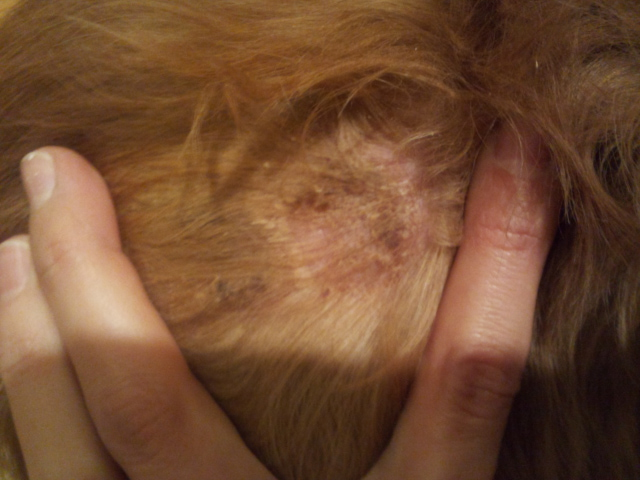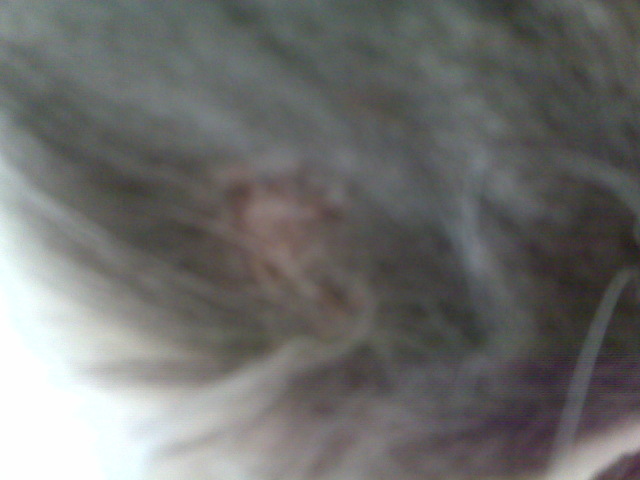QuestionI found a tick burrowing into my dog in a very sensitive area. Right where she urinates from. I think I got most of it out, but it seems to be inflames and red right now. Other than take her to a vet is there anything else I should do?
AnswerHi Kim!Ticks like to congregate several feet off the ground on vegetation along paths and roadsides.They patiently bide their time until dinner-your pet-comes padding by.Keeping grass and weeds trimmed to below ankle height will put ticks at disadvantage.The ticks won't have a good vantage point,and they wil, have fewer opportunities to attach themselves.
Although mature ticks "stalk" large prey,younger ticks typically feed on mice and other rodents before graduating to pets.Making your yard inhospitable to rodents will help eliminate the ticks as well.Remove bushy cover and rock piles and secure trash cans with spring-top lids.It's also a good idea to stack firewood away from the house.Move bird feeders away,too,since rodents may be attracted the seed.
Another way to end the tick/mouse relationship is with a product called Damminix.Consisting of cotton balls soaked with insecticide,Damminix is placed in strategic sites outside to attract mice,which use the cotton to build nests.The insecticide-soaked cotton kills fleas and ticks but doesn't appear to harm the mice.Damminix is available through farm supply catalogs.
When hiking in areas that harbor ticks,don't be a trailblazer.Just stick to the trails and make sure your pet sticks with you.That way you avoid the longer grasses or wooded areas where ticks are waiting.
Before heading into tick country,protect your pet with a spray,dip or powder containing pyrethrins,insecticides made from chrysanthemums.Other products that work include
D-limonene,linalool or permethrin.Before using insecticides on your feline friends,be sure to check the label.Products and doses that are safe for your dog may be dangerous when used for cats.
After you and your pet return home,give her a careful
going-over.While some species of ticks are easy to see,others aren't much bigger than the period at the end of this sentence.It takes sharp eyes to spot them all.Ticks like being warm and protected,so pay special attention to the areas under your pet's legs and in or around her ears.
If you do spot ticks,first spray your pet lightly with a tick insecticide and then comb his with a fine-toothed comb.Pet stores sell flea combs (which are also used for ticks) that will remove critters that aren't already embedded.
If you should spot a feeding tick, it's important to remove it quickly.The longer it feeds,the more likely it is to transmit Lyme disease.
Forget all those old wives' tales about how you're supposed to remove embedded ticks.Making them back out with matches or cigarettes doesn't work and could badly burn your pet.
Give a gentle pull.The best way is to take a pair of tweezers or forceps,grab as close to the ticks head as possible and gently pull it out.This way it only comes out nicely-head and heels and all.For extra protection after removing the tick,dab the area with a topical antiseptic like Betadine Solution or an antibiotic ointment.
Once you've removed a tick,don't just throw it in the trash or toilet.They don't just die because they're detached.You could end up with ticks crawling out of your toilet ay an inopportune moment.Vets recommend putting deached ticks in a jar partly filled with rubbing alcohol or insecticide.Then cover the jar and either dispose of it or keep it to show your vet just in case your pet develops symtoms of Lyme disease.
Although ticks can be extremely small,once they srat feeding,they expand to many times their normal size.
WHEN TO SEE THE VET
All weekend your dog romped through fields and forests with sheer joy,and your cat prowled through tall grass in pursuit of mice,real or imagined.But after having all this fun,your poor pets haven't been themselves.They don't feel like eating and their joints seem to hurt.Or maybe they have sores,fever and diarrhea.They may even be partially paralyzed.Call your vet right away.Ticks can transmit a number of diseases that cause these and other unpleasant symtoms.A toxin found in the salivary glands of a tick,for example,can cause a rare but dangerous condition called tick paralysis.This causes the pet's hindquarters-and possibly her whole body-to become progressively weaker.Once the tick is removed,hwever,your pet should recover nicely.Another condition your vet may look for include Lyme disease,Rocky Mountain spotted fever and ehrilchiosis.While dangerous,each of these diseases can be cures with antibiotics,particularly when they're caught early.Even if you haven't seen any ticks,you should call the vet as soon as you notice worrisome symtoms.Ticks can be extremely small,so not spotting one is hardly proof it was never there.It's best to err on the side of caution.
Before using any of this information,be sure to ask your vet if it is OK.You can print this or send this to his/her's office.I hope this is helpful!Please keep me posted and good luck!Give that little puppy some kisses for me!
Nicole.D.

 Sores on body
QuestionSore
QUESTION: Do you have any idea what
Sores on body
QuestionSore
QUESTION: Do you have any idea what
 Cat breed, safe for family?
Question
The kitten
I found a kitten a couple da
Cat breed, safe for family?
Question
The kitten
I found a kitten a couple da
 kitten with bloody stool
QuestionQUESTION: i have a kitten here, about 2-3 month
kitten with bloody stool
QuestionQUESTION: i have a kitten here, about 2-3 month
 Small black bumps on penis
Question
I have a male schnauzer, 5 yrs old. Two
Small black bumps on penis
Question
I have a male schnauzer, 5 yrs old. Two
 skin issue
Question
Sore next to jaw bone
I have a 9 year old cat
skin issue
Question
Sore next to jaw bone
I have a 9 year old cat